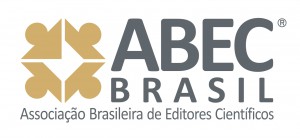Prevention of infections associated with peripheral catheters: instrument development and validation
DOI:
https://doi.org/10.5216/ree.v23.67583Keywords:
Catheterization, Peripheral, Catheter-Related Infections, Infection Control, Validation Study, NursingAbstract
Objectives: To develop and validate, for appearance and content, an instrument to assess the knowledge of nursing professionals and students on measures to prevent peripheral venous catheter-related bloodstream infection. Method: Methodological study carried out in two stages: instrument development, based on national and international guides, and appearance and content validation by ten expert judges, considering Content Validity Index ≥0.80 on clarity, relevance, and pertinence, as well as semantic analysis together with the target demographic. Results: After accepting the experts’ suggestions, the final instrument consisted of 36 questions in 6 dimensions with an overall Content Validity Index >0.90. Conclusion: The availability of the instrument responds to a gap in knowledge and can be used to assess the knowledge of nursing professionals and students regarding measures to prevent bloodstream infections associated with peripheral venous catheters.
Downloads
References
Brasil. Ministério da Saúde (BR). Medidas de prevenção de infecção relacionada à assistência à saúde. Brasília, DF: ANVISA; 2017 [acesso em: 20 maio 2020]. Disponível em: https://segurancadopaciente.com.br/wp-content/uploads/2015/09/ebook-anvisa-04-medidas-de-prevencao-de-de-infeccao-relacionada-a-assistencia-a-saude.pdf.
Ferrer C, Almirante B. Infecciones relacionadas con el uso de los catéteres vasculares. Enferm Infecc Microbiol Clin [Internet]. 2014 [acesso em: 20 maio 2020];32(2):115-24. Disponível em: https://doi.org/10.1016/j.eimc.2013.12.002.
Danski MTR, Oliveira GLR, Johann DA, Pedrolo E, Vayego SA. Incidence of local complications in peripheral venous catheters and associated risk factors. Acta Paul Enferm [Internet]. 2015 [acesso em: 18 maio 2020];28(6):517-23. Disponível em: https://doi.org/10.1590/1982-0194201500087.
Danski MTR, Johann DA, Vayego SA, Oliveira GRL, Lind J. Complications related to the use of peripheral venous catheters: a randomized clinical trial. Acta Paul Enferm [Internet]. 2016 [acesso em: 18 maio 2020];29(1):84-92. Disponível em: http://doi.org/10.1590/1982-0194201600012.
Urbanetto JS, Peixoto CG, May TA. Incidence of phlebitis associated with the use of peripheral IV catheter and following catheter removal. Rev Lat Am Enfermagem [Internet]. 2016 [acesso em: 20 maio 2020];24:e2746. Disponível em: https://doi.org/10.1590/1518-8345.0604.2746.
Capdevila-Reniu A, Capdevila JA. Peripheral venous catheter, a dangerous weapon. Key points to improve its use. Rev Clin Esp [Internet]. 2017 [acesso em: 10 maio 2020];217(8):464-7. Disponível em: https://doi.org/10.1016/j.rce.2017.04.001.
Raynak A, Paquet F, Marchionni C, Lok V, Gauthier N M, Frati F. Nurses’ knowledge on routine care and maintenance of adult vascular access devices: a scoping review. J Clin Nurs [Internet]. 2020 [acesso em: 12 maio 2020];29(21-22):e15419. Disponível em: https://doi.org/10.1111/jocn.15419.
Coluci MZO, Alexandre NMC, Milani D. Construção de instrumentos de medida na área da saúde. Cienc Saude Coletiva [Internet]. 2015 [acesso em: 12 maio 2020];20(3):925-36. Disponível em: https://doi.org/10.1590/1413-81232015203.04332013.
Polit DF, Beck CT. Fundamentos de pesquisa em enfermagem: avaliação de evidências para a prática da enfermagem. Porto Alegre: Artmed; 2018.
World Health Organization (WHO). Guidelines on hand hygiene in health care: a summary. Geneva: World Health Organization; 2009 [acesso em: 20 jun. 2020]. Disponível https://www.who.int/gpsc/5may/tools/who_guidelines-handhygiene_summary.pdf.
Ministério da Saúde (BR). Recomendações sobre o uso de luvas em serviços de saúde. Brasília, DF: Ministério da Saúde; 2016 [acesso em: 12 maio 2020]. Disponível em: http://www.saude.sp.gov.br/resources/cve-centro-de-vigilancia-epidemiologica/areas-de-vigilancia/infeccao-hospitalar/bmr/doc/ih16_bmr_uso_luvas.pdf.
Sako MP, Felix AMS, Kawagoe JY, Padoveze MC, Ferreira SA, Zem-Mascarenhas SH, et al. Knowledge about precautions in primary health care: tool validation. Rev Bras Enferm [Internet]. 2018 [acesso em: 15 maio 2020];71(suppl. 4):1589-95. Disponível em: https://doi.org/10.1590/0034-7167-2017-0886.
Souza RS, Oliveira PP, Dias AAL, Simão DAS, Pelizari AEB, Figueiredo RM. Prevention of infections associated with peripheral catheters: construction and validation of clinical scenario. Rev Bras Enferm [Internet]. 2020 [acesso em: 30 jul. 2020];73(5):e20190390. Disponível em: https://doi.org/10.1590/0034-7167-2019-0390.
Floriano DR, Rodrigues LS, Dutra CM, Toffano SEM, Pereira FMV, Chavaglia SRR, et al. Compliance with standard precautions by nursing professionals in high complexity care. Esc Anna Nery [Internet]. 2019 [acesso em: 20 maio 2020];23(2):e20180263. Disponível em: https://doi.org/10.1590/2177-9465-EAN-2018-0263.
Silva DM, Marques BM, Galhardi NM, Orlandi FS, Figueiredo RM. Hands hygiene and the use of gloves by nursing team in hemodialysis service. Rev Bras Enferm [Internet]. 2018 [acesso em: 10 jun. 2020];71(4):1963-9. Disponível em: https://doi.org/10.1590/0034-7167-2017-0476.
Maroldi MAC, Felix AMS, Dias AAL, Kawagoe JY, Padoveze MC, Ferreira SA, et al. Adherence to precautions for preventing the transmission of microorganisms in primary health care: A qualitative study. BMC Nurs [Internet]. 2017 [acesso em: 15 maio 2020];16(49):4-11. Disponível em: https://doi.org/10.1186/s12912-017-0245-z.
Baloh J, Thom KA, Perencevich E, Rock C, Robinson G, Ward M, et al. Hand hygiene before donning nonsterile gloves: healthcareworkers’ beliefs and practices. Am J Infect Control [Internet]. 2019 [acesso em: 24 maio 2020];47(5):492-7. Disponível em: https://doi.org/10.1016/j.ajic.2018.11.015.
Wilson J, Prieto J, Singleton J, O’Connor V, Lynam S, Loveday H. The misuse and overuse of non-sterile gloves: application of an audit tool to define the problem. J Infect Prev [Internet]. 2015 [acesso em: 12 jun. 2020];16(1):24-31. Disponível em: https://doi.org/10.1177/1757177414558673.
Barratt R, Gilbert GL, Shaban RZ, Wyer M, Hor S. Enablers of, and barriers to, optimal glove and mask use for routine care in the emergency department: an ethnographic study of Australian clinicians. Australas Emerg Care [Internet]. 2019 [acesso em: 25 jun. 2020];23(2):105-13. Disponível em: https://doi.org/10.1016/j.auec.2019.10.002.
Slater K, Cooke M, Scanlan E, Rickard CM. Hand hygiene and needleless connector decontamination for peripheral intravenous catheter care-time and motion observational study. Am J Infect Control [Internet]. 2019 [acesso em: 10 jun. 2020];47(8):1017-9. Disponível em: https://doi.org/10.1016/j.ajic.2019.01.022.
Shi D, Yao Y, Yu W. Comparison of preoperative hair removal methods for the reduction of surgical site infections: a meta-analysis. J Clin Nurs [Internet]. 2017 [acesso em: 13 maio 2020];26(19-20):2907-14. Disponível em: https://doi.org/10.1111/jocn.13661.
Estequi JG, Roseira CE, Jesus JB, Figueiredo RM. Boas práticas na manutenção do cateter intravenoso periférico. Enferm Foco [Internet]. 2020 [acesso em: 10 maio 2020];11(1):10-4. Disponível em: https://doi.org/10.21675/2357-707x.2020.v11.n1.2246.
Helm RE. Accepted but unacceptable: peripheral iv catheter failure: 2019 follow-up. J Infus Nurs [Internet]. 2019 [acesso em: 12 maio 2020];42(3):149- 50. Disponível em: https://doi.org/10.1097/NAN.0000000000000324.
Lanza VE, Alves APP, Camargo AMS, Cacciari P, Montandon DS, Godoy S. Preventive measures of infection related to peripheral venous catheter: adherence in intensive care. Rev Rene [Internet]. 2019 [acesso em: 10 maio 2020];20:e40715. Disponível em: https://doi.org/10.15253/2175-6783.20192040715.
Braga LM, Parreira PMSD, Arreguy-Sena C, Carlos DM, Mónico LSM, Henriques MAP. Incidence rate and the use of flushing in the prevention of obstructions of the peripheral venous catheter. Texto & Contexto Enferm [Internet]. 2018 [acesso em: 22 maio 2020];27(4):e2810017. Disponível em: https://doi.org/10.1590/0104-07072018002810017.
Downloads
Published
Issue
Section
License
Copyright (c) 2021 Revista Eletrônica de Enfermagem

This work is licensed under a Creative Commons Attribution 4.0 International License.














